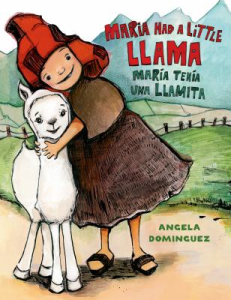Quite a while ago I read The Story of Spanish by the same husband/wife author duo, and it was one of the best popular linguistic books I’ve ever read. It was great to get a history of Spanish and all of its origins. These books go very deep into the history, cultures, personalities, and events that influence the development of language. I need to read The Story of Spanish again and write a review, but for now here are some notes from another one of their works, The Story of French.
French, a Romantic language just like Spanish, seems so different. I learned Spanish prior to starting to study French, and found Spanish, for lack of a better word, was easier. It was much easier to learn. Spanish was phonetic, French is not. Spanish pronunciation is pretty straightforward, French has tricky nasal and guttural sounds. Spanish sounds like other Latin based languages, such as Portuguese and Italian, French much less so. So what’s going on? Why is French so different from Spanish and all of the other Romance languages for that matter?
The answers to these questions start to become clear in the early chapters of this book. The authors claim “while English is the most Latin of the Germanic languages, French is the most Germanic of the Romance Languages”. Gaul, or what is modern day France was part of the Roman empire, and many languages in this region came from Latin there were significant influences from other languages, both from within the territory and from Germanic invaders from the east. “French” as we know it today is really one of the hundreds of local dialects that used to exist in France/Gaul. French would also end up significantly impacting one particular Germanic language, the one in which your humble author is currently writing. The Norman invasion and occupation of England made quite an impression in English, and is responsible for many of the English words of Latin origin today.
The French language and its development is chronicled through time; from the dark ages and into the enlightenment. French philosophers prospered during the enlightenment, and gave French an international appeal in fields where Latin had been dominant before. French salons where influential philosophers like Voltaire and Rousseau gathered made French a language of noble minds and artists.
Nadeau and Barlow have a great knack for including great trivial knowledge. An example of this is the origin of the word restaurant, which originally meant “restore-ant”, named after a beef broth that was thought to have tonic qualities. Restaurants started in France. Prior to the French revolution, chefs worked in Chateaus for the nobility. During the revolution, many of these elite either went to the guillotine or sought refuge outside of France. With their traditional income gone these food professionals needed to find another outlet to utilize their talent, and the restaurant was born.
The authors do an excellent job of describing the whole francophone world, visiting old colonies and enclaves of French speakers throughout the world. Nadeau and Barlow, being French Canadian, pay special tribute to Quebecois, the Acadians, and the history of French speaking people in all of Canada’s provinces. History is given from Colonial times of New France all the way through Quebec's independence movement. They also visit Louisiana and document a disappearing Cajun French culture, which gives us one of my favorite quotes of the book: “Every time we’ve tried to close the coffin on the Cajuns, the body’s sprung up and called for beer”. I feel like I’ve walked away from this book with a much more complete knowledge of both the francophonie (countries with large number of French speakers) and the Francophonie (political union of voluntary member-states where French is an influential language). It is great to see that French remains an important international language, and even in countries where English is gaining traction, these gains are not at the expense of French (the authors cite Egypt and Algeria as prominent examples).
This title touches on many topics and closes strong with what the future holds for French. Although this book is about a language and includes lots of linguistic information, it reads like a popular biography. The authors do an excellent job of bringing the history of French alive with vivid history, thorough research, and personal interactions that they had with French experts from all around the world. If you’ve read and enjoyed The Mother Tongue by Bill Bryson, you’ll love this book.



